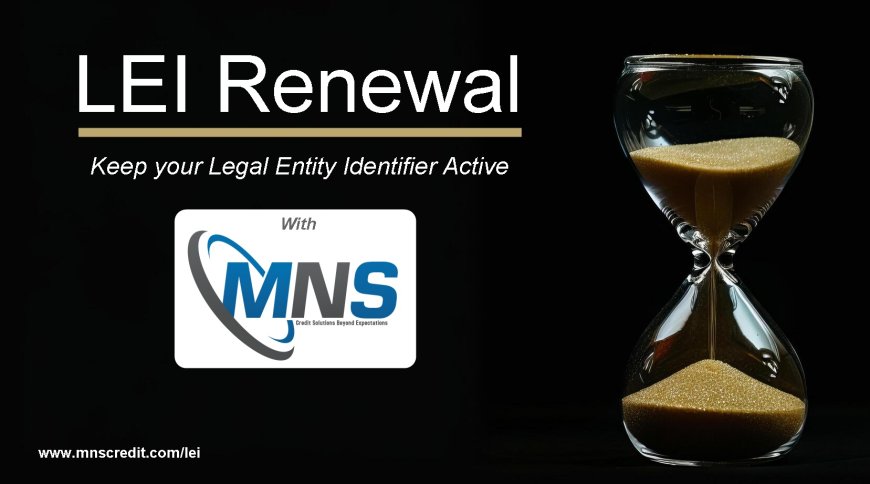Understanding LEI Renewal: Validity, Process, and Compliance

In todays globalized financial landscape, transparency, accuracy, and trust are paramount. The Legal Entity Identifier (LEI) system, developed in response to the 2008 financial crisis, plays a crucial role in achieving these goals. An LEI is a 20-character, alphanumeric code that uniquely identifies legal entities participating in financial transactions. However, merely obtaining an LEI is not enough; LEI renewal is essential for maintaining compliance, data integrity, and continued participation in financial markets.
This article explores the validity of an LEI, the importance of timely LEI renewal, available renewal durations (1-year, 3-year, and 5-year), and the associated regulatory and compliance requirements.
What Is an LEI?
The Legal Entity Identifier (LEI) is part of a global initiative led by the G20 and implemented by the Global Legal Entity Identifier Foundation (GLEIF). It helps identify legally distinct entities involved in financial transactions across borders. Each LEI contains information such as the entitys name, address, ownership structure, and parent entities, all publicly available via the GLEIF database.
LEI Validity and the Need for Renewal
An LEI is valid for one year from the date of its issuance or last renewal. After this period, it becomes lapsed unless renewed. A lapsed LEI does not mean the entity is invalid or dissolved; however, a lapsed status may restrict the entitys participation in certain financial transactions, especially those involving regulatory compliance.
Key Validity Points:
-
Initial validity: 1 year from the date of issuance.
-
Status after expiry: Lapsed status if not renewed on time.
-
Impact of lapse: Regulatory restrictions and limited access to trading platforms or financial instruments.
What is LEI Renewal?
LEI renewal is the process of revalidating the legal entitys reference data to keep the LEI active and compliant in the GLEIF database. The renewal involves updating and verifying the entitys registration details such as:
-
Company name
-
Address
-
Registration authority
-
Parent/subsidiary relationships
The renewal process is carried out through a Local Operating Unit (LOU) or a Registration Agent authorized by the GLEIF.
Importance of Timely LEI Renewal
Timely renewal of an LEI is not just a matter of best practiceit is often a regulatory requirement. Regulatory bodies such as the European Securities and Markets Authority (ESMA), the U.S. Commodity Futures Trading Commission (CFTC), and the Reserve Bank of India (RBI) mandate active LEIs for specific financial transactions.
Consequences of Non-Renewal:
-
Ineligibility to trade on financial markets
-
Inability to file regulatory reports
-
Delays in transactions
-
Non-compliance penalties
Maintaining an active LEI ensures uninterrupted market access and fosters credibility among counterparties and regulators.
LEI Renewal Durations: 1-Year, 3-Year, and 5-Year Options
LEI renewal can be performed for 1 year, 3 years, or 5 years, depending on the service provider and the legal entitys preference. Each option has its own benefits in terms of cost, administrative overhead, and compliance assurance.
1-Year LEI Renewal
-
Description: Annual manual renewal required.
-
Ideal for: Entities with changing business structures or short-term project-based entities.
-
Benefits:
-
Flexibility in updating data
-
Lower upfront cost
-
-
Drawbacks:
-
Requires yearly renewal actions
-
Risk of missing deadlines
-
3-Year LEI Renewal
-
Description: Prepaid multi-year renewal where the LEI is automatically renewed for 3 consecutive years.
-
Ideal for: Stable entities with consistent structures.
-
Benefits:
-
Reduces administrative burden
-
Ensures continuity and compliance
-
Potential cost savings from multi-year plans
-
-
Drawbacks:
-
Higher upfront fee
-
5-Year LEI Renewal
-
Description: Automatic renewal arrangement for 5 years with periodic validation.
-
Ideal for: Established companies with minimal structural changes.
-
Benefits:
-
Long-term peace of mind
-
Eliminates risk of lapsing
-
Economical over time
-
-
Drawbacks:
-
Less flexibility in case of business model changes
-
How to Renew an LEI
The LEI renewal process is straightforward but must be done through an LOU or a Registration Agent. Here is a general step-by-step guide:
-
Select an LOU or Registration Agent: Choose a GLEIF-accredited service provider.
-
Submit Renewal Request: Enter your existing LEI and verify the legal entitys details.
-
Provide Supporting Documents: If necessary, such as proof of business registration.
-
Pay the Fee: Fees vary by provider and duration (1-year, 3-year, or 5-year).
-
Verification and Renewal: The LOU verifies your data and updates the GLEIF database.
-
Confirmation: A confirmation email or dashboard update notifies you of successful renewal.
Regulatory and Compliance Requirements
Many financial authorities require an active LEI for specific operations. Below are some key regulatory frameworks that mandate LEI compliance:
1. MiFID II / MiFIR (Europe)
-
Mandates LEI for all legal entities involved in trading European financial instruments.
-
Both buyer and seller must have active LEIs for trade execution.
2. EMIR (Europe)
-
Requires LEI for reporting derivatives to trade repositories.
3. Dodd-Frank Act (USA)
-
LEI required for swap data reporting and transaction tracking.
4. Reserve Bank of India (RBI)
-
Mandates LEI for large corporate borrowers and entities involved in over-the-counter (OTC) derivative markets.
5. Basel III & Solvency II
-
Financial institutions use LEIs in risk reporting and assessment.
In all cases, a lapsed LEI may be treated as non-compliance, exposing entities to regulatory action or suspension from trading platforms.
Choosing a Reliable LEI Renewal Partner
While LEI data is standardized, the experience of renewing an LEI can differ based on the service provider. When selecting an LOU or Registration Agent, consider the following:
-
Accreditation by GLEIF
-
Multi-year renewal support
-
Automated renewal reminders
-
Transparent pricing
-
Customer support availability
-
Bulk renewal capabilities for parent entities
Many providers also offer dashboards to manage multiple LEIs, particularly useful for financial institutions or corporate groups.
Tips for Hassle-Free LEI Renewal
-
Set automated reminders: Mark your calendar or opt for email alerts.
-
Opt for multi-year renewals: To avoid annual renewals and lapses.
-
Keep company records updated: Especially for changes in legal structure.
-
Use the GLEIF database: To check the status of your LEI anytime.
-
Review your service provider: Ensure they provide timely support and transparency.
Conclusion
The renewal of an LEI is a critical aspect of maintaining regulatory compliance, operational continuity, and market trust. While obtaining an LEI is the first step, its ongoing validity through annual or multi-year LEI renewal ensures uninterrupted participation in global financial systems. Whether you choose a 1-year, 3-year, or 5-year renewal plan, proactive management of your LEI status is essential to avoid regulatory issues and maintain credibility.
For any legal entity participating in financial markets, LEI renewal is not optionalits a necessity. Choosing the right renewal strategy and partner can simplify the process and provide long-term peace of mind.





























